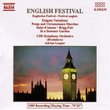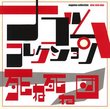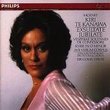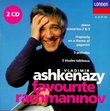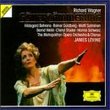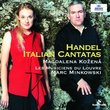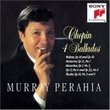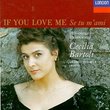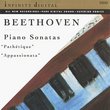| All Artists: Franz Joseph Haydn Title: Haydn: String Quartets Op. 64, Nos. 1, 2 and 3 Members Wishing: 0 Total Copies: 0 Label: Naxos Release Date: 2/15/1994 Genre: Classical Styles: Chamber Music, Historical Periods, Classical (c.1770-1830) Number of Discs: 1 SwapaCD Credits: 1 UPCs: 730099567329, 4891030506732 |
Search - Franz Joseph Haydn :: Haydn: String Quartets Op. 64, Nos. 1, 2 and 3
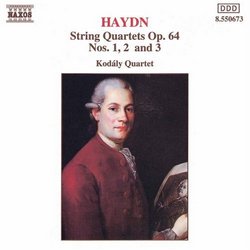 | Franz Joseph Haydn Haydn: String Quartets Op. 64, Nos. 1, 2 and 3 Genre: Classical
|
Larger Image |
CD DetailsSimilar CDsSimilarly Requested CDs |
CD ReviewsExploring the Haydn Quartets -- Opus 64 No. 1-3 Robin Friedman | Washington, D.C. United States | 05/29/2004 (4 out of 5 stars) "This budget-priced CD is part of a complete recording of the Haydn string quartets performed by the Kodaly Quartet of Budapest. It includes the first three quartets in Haydn's opus 64, which consists of 6 quartets. These are rather late works and were composed in 1790, just before Haydn's first visit to London. (i.e. the time of the "London" symphonies) There is no more accessible introduction to chamber music than the Haydn quartets. This CD is a delight in its variety and in the joy of making music.The first quartet of the set, in C major, is serene and happy in character. The first movement is an allegro moderato which opens with a bouncy theme in the solo violin which is soon taken up by the entire quartet. There is counterpoint in the minor in the development, and the recapitulation, surprisingly, is extended and varies the exposition by shifting to the minor key just before the end. This quartet lacks a slow movement. The second movement is a minuet which features a whimsical theme in the cello. The third movement is a scherzo which is angular in character and slightly faster than the minuet. It consists of a lengthy theme which is repeated and embellished twice -- almost a variation movement. The finale is marked presto and features dramatic pauses and stops and a piping theme in the violin's high register. The movement and the quartet come to a sudden, quiet ending.Although the first quartet lacks a slow movement, this lack is more than compensated in the lovely adagios in the second and third quartets on this CD.The second quartet is in B-minor and is somber in character. The first movement, allegro spirituoso, opens with a short violin solo followed by a dramatic turn to the minor. The movement increases in intensity as it progresses. The second movement, adagio ma non troppo, is an extended slow movement with a lyrical theme and long note values. The theme is stated in the first violin and echoed in the cello and middle strings. As the theme is developed it is elaborated with filigree in the violin and a restatement of the theme in the cello. The third movement is a minuet which returns to the minor. It features a peaceful, lyrical trio in which the violin has the lead. This theme in the trio echoes the slow movement of the quartet. The finale is marked presto and is again in the minor. The movement increases in dramatic intensity until its quiet end in the high register of the violin.I found the third quartet in B-Flat major the most enjoyable of the three on this disk. The quartet is lively and energetic, with unusual rhythms, lots of trills, and a slow movement even more extended that that of the b-minor quartet. There is excellent contrast and continuity in the movements of this work.The first movement, vivace assai, opens in unison with the opening theme followed by a flowing second theme stated in the violin. There are many delicious twists and turns in this movement, particularly the trills over the cello and the running themes in the violin. The second movement is marked adagio. It is a lengthy movement which opens with a slow, meditative theme followed by an intense, plaintive middle section and a return of the opening material. The minuet is lively, emphatic, and rhythmic, featuring many trilling sections in the middle and lower strings and a cello drone in the trio. The finale is lively with a short, falling, carefree figure repeated many times by the first violin. There is a contrast in this movement between quick and slow sections. There is a short slow section just before the end and then a jolly close in unison.These quartets were written to be played by amateurs and to be enjoyed by their listeners. Even more than is the case with his symphonies, Haydn established a standard in his quartet writing that subsequent composers emulated and developed. There is much excellent music in these quartets that remains to be appreciated and discovered. This CD will reward exploration both by listeners new to chamber music and to experienced listeners."
|

 Track Listings (12) - Disc #1
Track Listings (12) - Disc #1
